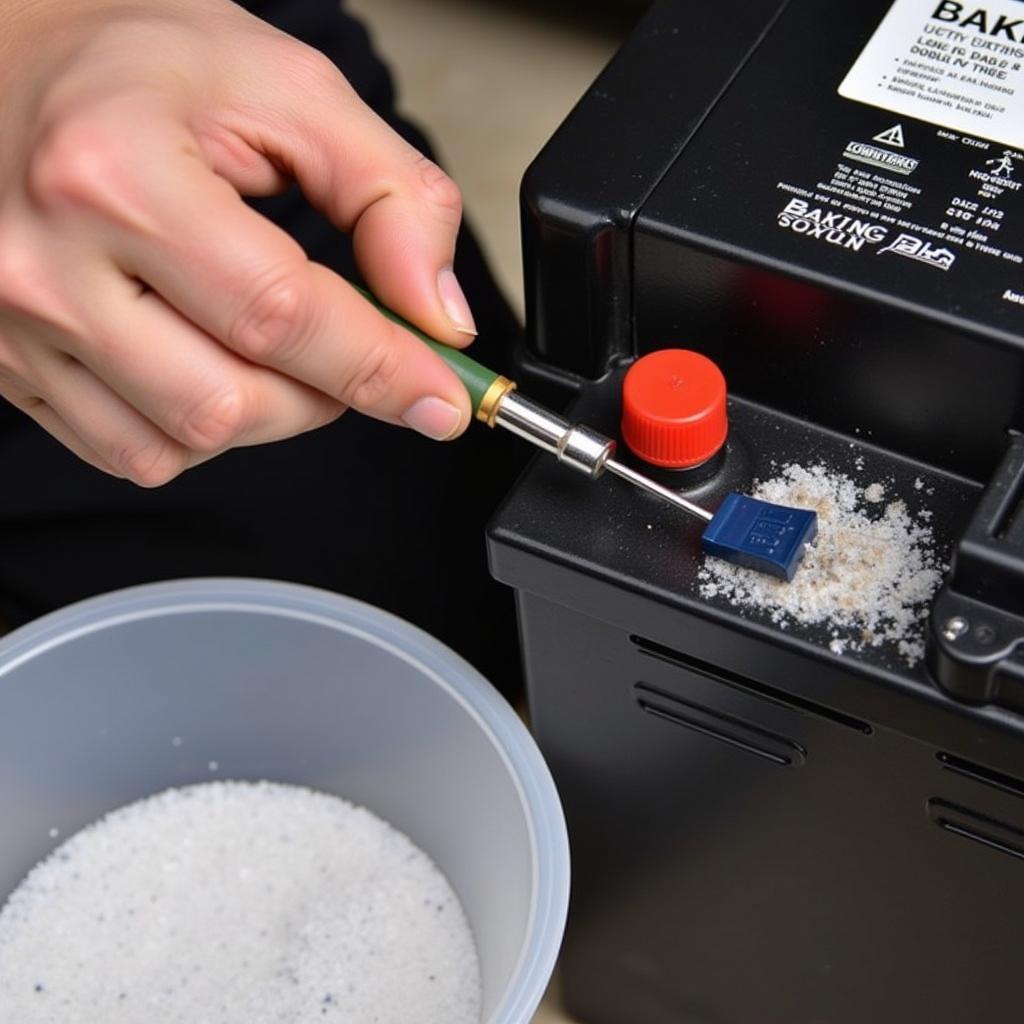A red brake fluid warning light on your dashboard signals a serious issue with your vehicle’s braking system. It’s crucial to address this warning immediately to prevent potential brake failure and ensure your safety on the road. This article provides a comprehensive guide to understanding the red brake fluid warning, its common causes, and the steps you should take to resolve the issue.
Understanding Your Brake Fluid Warning Light
The red brake fluid warning light illuminates for two primary reasons:
-
Low Brake Fluid Level: This is the most common cause. Brake fluid is essential for transmitting force from your brake pedal to the wheels, allowing your car to stop. A leak in the system will reduce fluid levels, triggering the warning light.
-
Brake System Malfunction: While less common, the warning light can also indicate a problem within the brake system itself, such as a faulty brake line, master cylinder, or ABS module.
Why Is My Brake Fluid Low?
Several factors can contribute to low brake fluid:
-
Leaks: Brake fluid leaks can occur in various components, including brake lines, hoses, calipers, and the master cylinder. Age, wear and tear, corrosion, or physical damage can cause these leaks.
-
Worn Brake Pads: While not a direct cause of brake fluid loss, worn brake pads require more fluid to function properly. If you haven’t replaced your brake pads in a while and notice the warning light, it’s essential to check both the pads and the fluid level.
Dangers of Ignoring a Red Brake Fluid Warning
Ignoring a red brake fluid warning light is incredibly risky. Driving with low brake fluid significantly compromises your braking system, increasing your stopping distance and the risk of complete brake failure.
 Car Skidding with Brake Failure
Car Skidding with Brake Failure
What To Do When Your Brake Fluid Warning Light Turns On
-
Pull Over Safely: Find a safe location to pull over as soon as possible. Continuing to drive with a red brake fluid warning is dangerous.
-
Check Your Brake Fluid Level: With the engine off, locate your brake fluid reservoir under the hood (refer to your owner’s manual). The reservoir will have minimum and maximum level markings.
-
Do Not Drive If the Level Is Low: If the brake fluid is below the minimum mark, do not attempt to drive your vehicle. Call a tow truck and have your car transported to a qualified mechanic.
-
If the Level Is Normal: If the fluid level appears normal, there may be a malfunction within the braking system itself. Exercise extreme caution and contact a mechanic for diagnosis and repair.
Can I Add Brake Fluid Myself?
While you can temporarily add brake fluid to reach a safe driving level, it’s crucial to note:
-
Identifying the Leak: Simply adding brake fluid does not address the underlying leak. It’s essential to have a mechanic identify and repair the leak to prevent further issues.
-
Using the Correct Fluid: Using the wrong type of brake fluid can damage your braking system. Refer to your owner’s manual for the recommended brake fluid type for your vehicle.
Remote Diagnostics and Programming for Brake Issues
In some cases, remote diagnostics and programming can be used to identify and address specific brake system problems. This technology allows qualified technicians to access your vehicle’s onboard computer system remotely to:
-
Read Diagnostic Trouble Codes (DTCs): These codes provide valuable information about the nature of the brake system malfunction.
-
Perform Software Updates: In some instances, software updates for your vehicle’s Electronic Brake Control Module (EBCM) or ABS module may be available to address certain issues.
-
Conduct Remote Programming: Remote programming allows technicians to reprogram or calibrate certain components of the braking system without physically accessing your vehicle.
However, it’s important to note that not all brake problems can be diagnosed or repaired remotely. Physical inspection and repair by a qualified technician are often necessary.
Preventing Future Brake Fluid Warnings
-
Regular Brake Fluid Flushes: Brake fluid absorbs moisture over time, reducing its effectiveness. Consult your owner’s manual for recommended brake fluid flush intervals.
-
Routine Brake Inspections: Schedule regular brake inspections with a qualified mechanic to identify potential issues early on.
-
Address Warning Lights Promptly: Never ignore warning lights related to your braking system. Addressing them promptly can prevent costly repairs and ensure your safety.
Conclusion
A red brake fluid warning light demands immediate attention. Ignoring this warning can lead to dangerous situations on the road. Remember to prioritize your safety by understanding the potential causes, taking appropriate action when the light illuminates, and practicing preventative maintenance to keep your braking system functioning optimally.
bmw brake fluid warning light red
Frequently Asked Questions
-
Is it safe to drive with the brake fluid warning light on? No, it is highly unsafe to drive with the brake fluid warning light illuminated. It indicates a potential issue with your braking system, and driving in this condition could lead to brake failure.
-
What color is the brake fluid warning light? The brake fluid warning light is typically red, signifying a serious issue requiring immediate attention.
-
How often should I check my brake fluid level? It’s good practice to visually inspect your brake fluid level at least once a month and more frequently if you notice any changes in your brake pedal feel.
-
Can a brake fluid leak fix itself? No, a brake fluid leak will not fix itself. It requires professional diagnosis and repair to ensure the safety and functionality of your braking system.
-
How much does it cost to fix a brake fluid leak? The cost of repairing a brake fluid leak varies depending on the source and severity of the leak, as well as labor costs in your area.
-
Can I use any type of brake fluid in my car? No, using the incorrect type of brake fluid can damage your braking system. Refer to your owner’s manual for the recommended brake fluid type for your vehicle.
-
How can remote diagnostics help with brake problems? Remote diagnostics can help identify and sometimes address specific brake system problems by reading diagnostic trouble codes, performing software updates, and conducting remote programming. However, physical inspection and repair by a qualified technician are often necessary.

